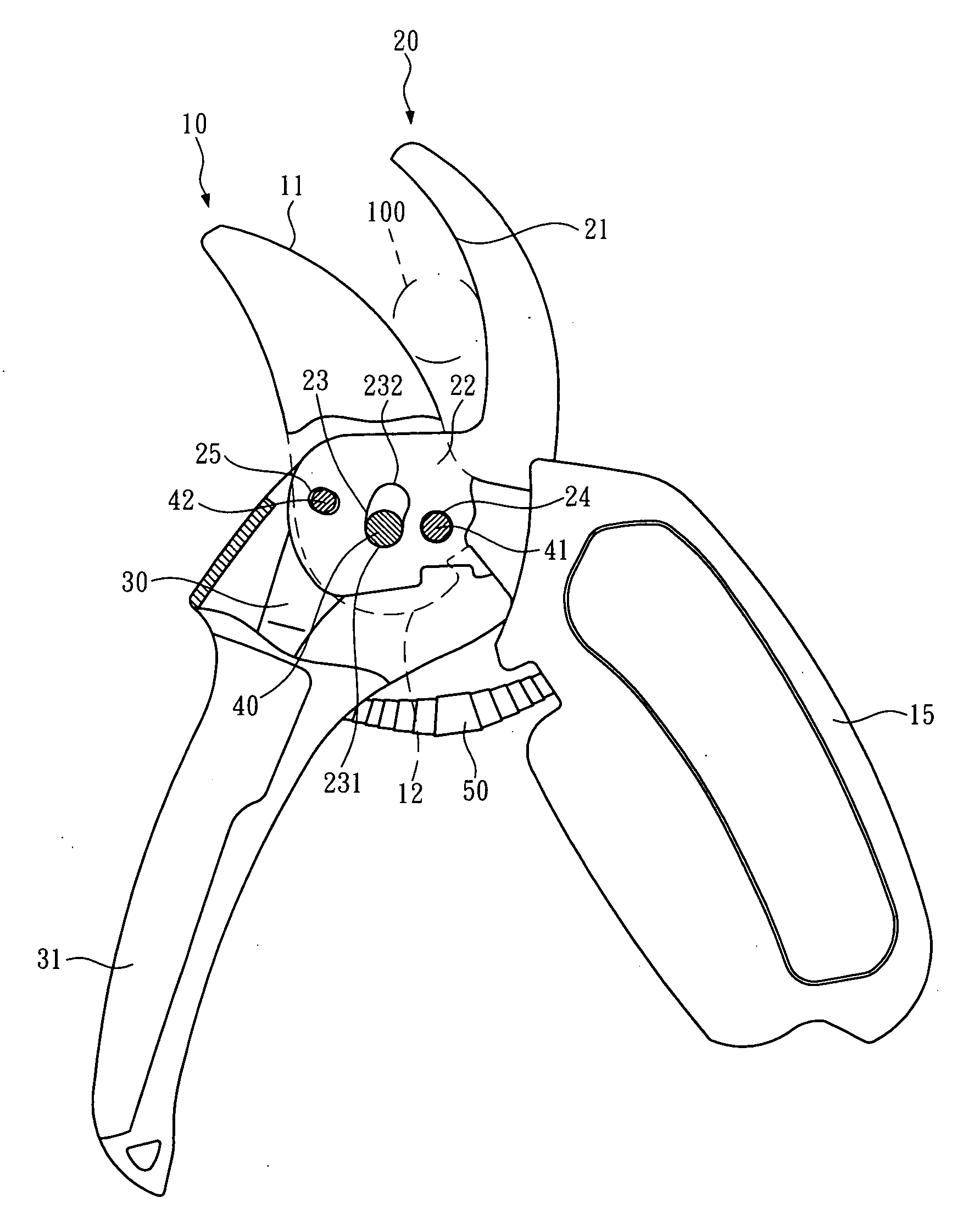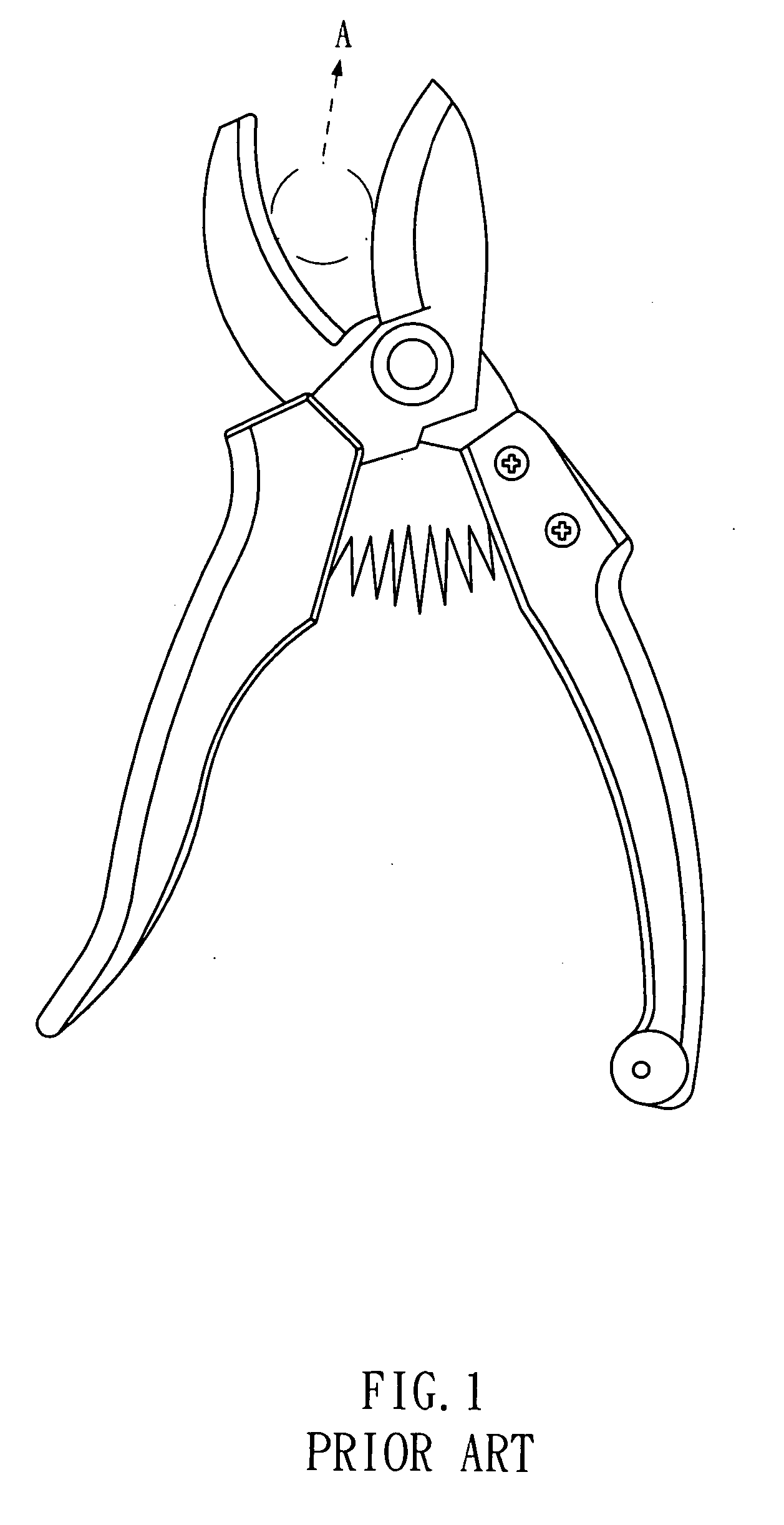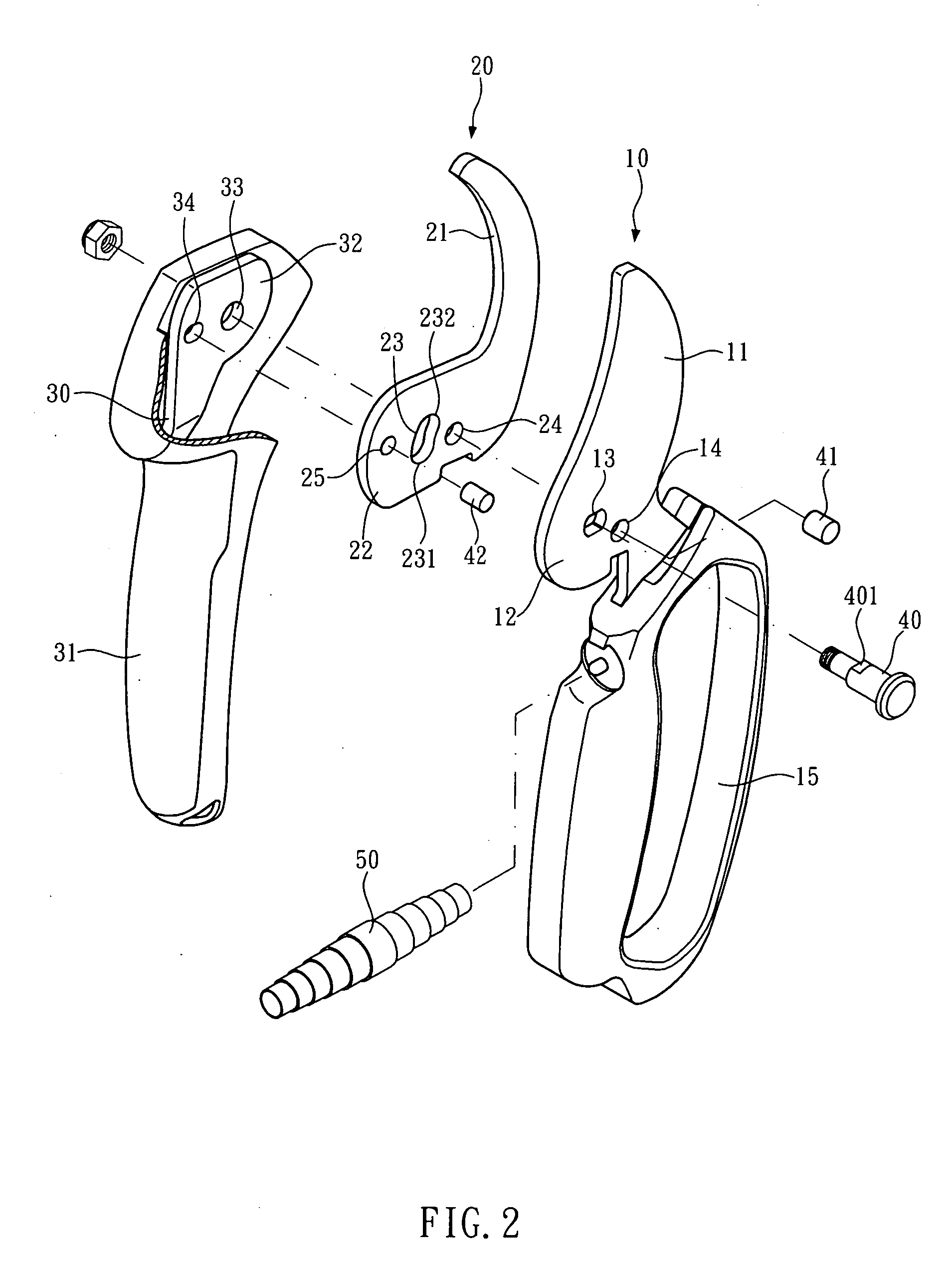Gardening shears
a shear and garden technology, applied in the field of garden shears, can solve the problems of difficulty in stably drilling the handles of users, roughness or even tears at the cut of the objective branch, and the defects of the foresaid conventional gardening shear, so as to reduce the shearing resistance, facilitate saving operation effort, and maintain proper shearing efficiency
- Summary
- Abstract
- Description
- Claims
- Application Information
AI Technical Summary
Benefits of technology
Problems solved by technology
Method used
Image
Examples
Embodiment Construction
[0032]As shown in FIGS. 2 and 3, an embodiment of the disclosed effort-saving shears primarily comprises:
[0033]a first shear element 10 having a cutting blade portion 11 at one end, a combining portion 12 at the opposite end comprising a pivot hole 13 and a shear element combining hole 14, and a first handle 15 further attached to the first shear element 10;
[0034]a second shear element 20 having an anvil blade portion 21 at one end, and a combining portion 22 at the opposite end comprising a pivot hole 23 and a shear element combining hole 24 as well as a handle shaft combining hole 25 positioned respectively at the two sides of the pivot hole; wherein the pivot hole 23 is in an elliptic shape and has a first end 231 and a second end 232 at the two curve edges respectively;
[0035]a handle shaft 30 axially positioned within a second handle 31 and having a combining portion 32 at one end which comprises a pivot hole 33 and a shear element combining hole 34 wherein the combining portion...
PUM
 Login to View More
Login to View More Abstract
Description
Claims
Application Information
 Login to View More
Login to View More - R&D
- Intellectual Property
- Life Sciences
- Materials
- Tech Scout
- Unparalleled Data Quality
- Higher Quality Content
- 60% Fewer Hallucinations
Browse by: Latest US Patents, China's latest patents, Technical Efficacy Thesaurus, Application Domain, Technology Topic, Popular Technical Reports.
© 2025 PatSnap. All rights reserved.Legal|Privacy policy|Modern Slavery Act Transparency Statement|Sitemap|About US| Contact US: help@patsnap.com



